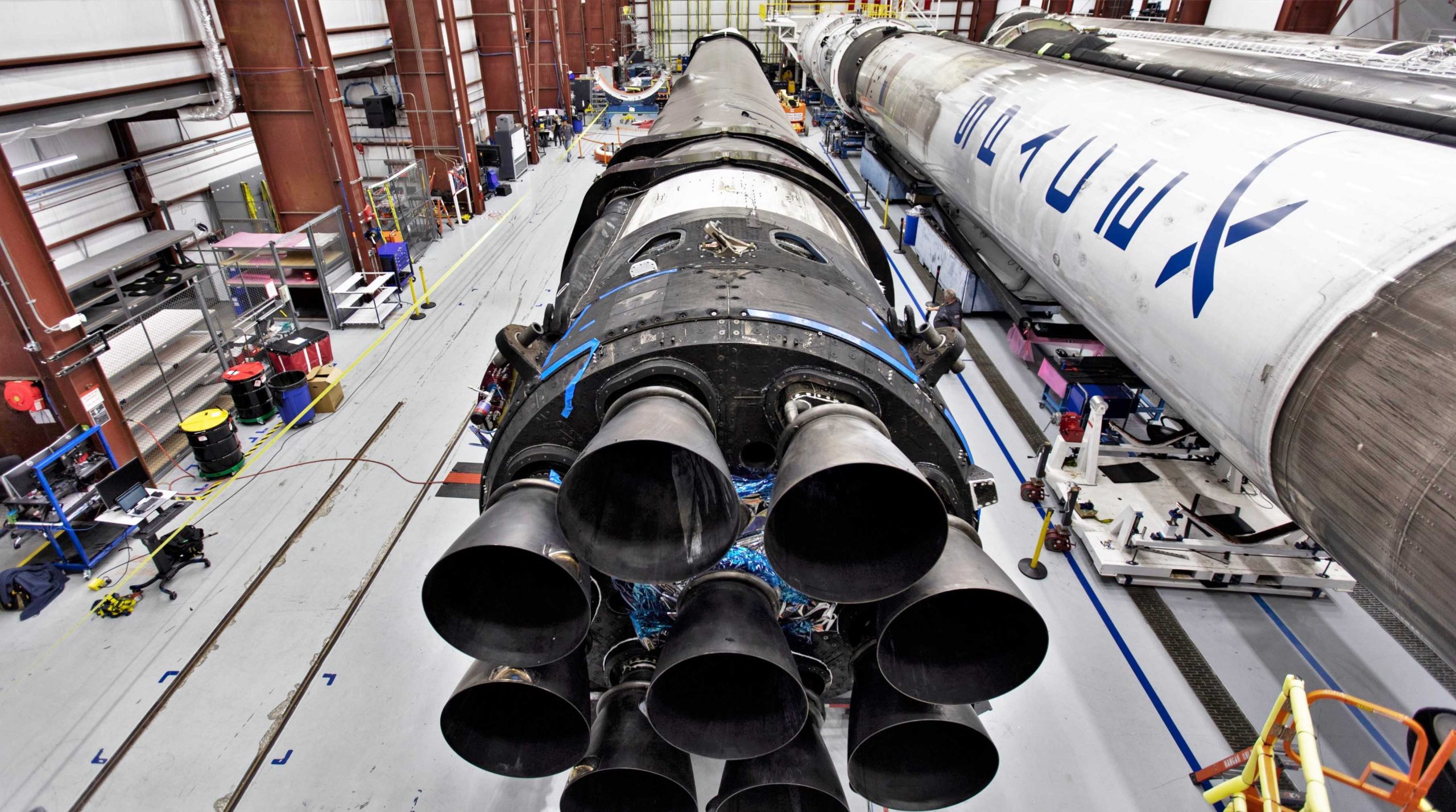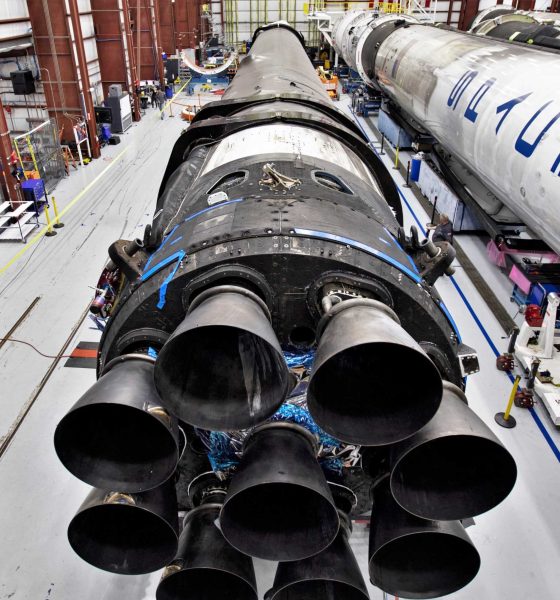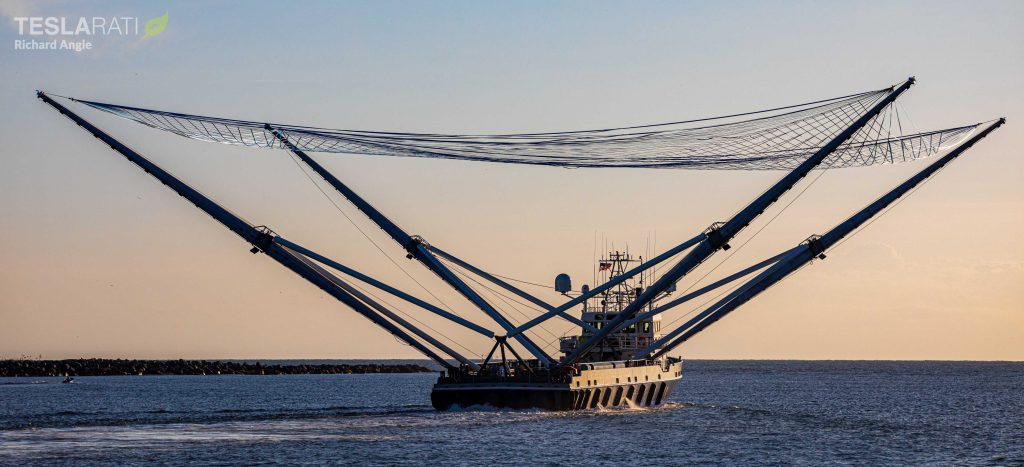

News
SpaceX’s first Falcon 9 launch in months gets a launch date
SpaceX’s first Falcon 9 launch in more than three months finally has a launch date and it looks like the company’s growing fleet is going to attempt to catch (or land) almost every piece of the rocket, a big first for Falcon 9 reusability if SpaceX can pull it off.
After an exceedingly long wait, SpaceX’s next launch – Starlink’s first “v1.0” mission – is finally on the Eastern range and is scheduled to launch no earlier than ~10 am ET (15:00 UTC) on November 11th, recently confirmed by SpaceFlightNow.com and LaunchPhotography. Although similar lulls in US orbital launch activity have occurred in the past, they are extremely rare: the last time a lull more than three months long occurred was in 2010.
For SpaceX, this is the longest the company has gone without a launch since Falcon 9’s last catastrophic failure, which grounded the rocket for ~4.5 months after a massive explosion in September 2016. By all appearances, the likely 14-week gap between orbital SpaceX launches is little more than the product of bad luck, with customer payloads and SpaceX payloads both coincidentally requiring more time than expected to prepare for flight.
Although the extreme delay between launches is unfortunate, it also happens to have given SpaceX’s recovery engineers a lot more time to prepare the latest member of the rocket recovery fleet for its first attempted fairing catch. Known as GO Ms. Chief, she joins fairing recovery vessel GO Ms. Tree (formerly Mr. Steven) and has spent the last two or so months being outfitted with a brand new net and arms – slightly different but nearly identical to Ms. Tree’s.
Pictured in Stephen Marr’s tweet at the top of this article, Ms. Tree and Ms. Chief appear to be more or less complete, and Ms. Chief took to the Atlantic Ocean with her net installed for the first time just over a week ago. If the ships are as prepared as they look, there’s a strong chance that Ms. Tree and Ms. Chief will be able to team up to attempt the first simultaneous catch of both halves of a Falcon payload fairing. At the moment, SpaceX has caught a single parasailing fairing half twice during its last two consecutive attempts, a strong sign that the company has solved what proved to be an extremely challenging problem.

Falcon 9’s next reusability milestone
As always, prior to launch, SpaceX will fuel and static fire the Falcon 9 rocket to verify that all systems are performing nominally. According to NASASpaceflight.com, that static fire test is scheduled no earlier than Tuesday, November 5th, approximately six days before launch.
Speaking last month, VP of Flight and Build Reliability Hans Koenigsmann stated that Starlink-1 would fly on a thrice-flown Falcon 9 booster, meaning that the mission will likely mark the first time SpaceX flies the same Falcon 9 booster four times. At this point, SpaceX’s Falcon 9 Block 5 nth-reuse milestones are becoming less and less surprising as it becomes clearer than ever that the rocket upgrade – designed to support “at least” 10 launches per booster – is well on its way to reaching that goal.
At the moment, the most likely candidates for that fourth-flight milestone are Falcon 9 boosters B1048 and B1049, the former of which flew its third orbital mission in February 2019, while the latter supported SpaceX’s dedicated Starlink v0.9 launch debut in May 2019. Falcon 9 B1046 – also with three launches under its belt – is scheduled to fly for the fourth (and probably final) time as early as mid-December for Crew Dragon’s critical In-Flight Abort Test, while Falcon 9 B1047 flew its third and final mission in August 2019.
All things considered, SpaceX’s quasi return-to-flight after three months without a launch is set to be an exceptionally important mission for Falcon 9 and should be well worth the wait.
Check out Teslarati’s Marketplace! We offer Tesla accessories, including for the Tesla Cybertruck and Tesla Model 3.

Elon Musk
Elon Musk and Tesla AI Director share insights after empty driver seat Robotaxi rides
The executives’ unoccupied tests hint at the rapid progress of Tesla’s unsupervised Robotaxi efforts.

Tesla CEO Elon Musk and AI Director Ashok Elluswamy celebrated Christmas Eve by sharing personal experiences with Robotaxi vehicles that had no safety monitor or occupant in the driver’s seat. Musk described the system’s “perfect driving” around Austin, while Elluswamy posted video from the back seat, calling it “an amazing experience.”
The executives’ unoccupied tests hint at the rapid progress of Tesla’s unsupervised Robotaxi efforts.
Elon and Ashok’s firsthand Robotaxi insights
Prior to Musk and the Tesla AI Director’s posts, sightings of unmanned Teslas navigating public roads were widely shared on social media. One such vehicle was spotted in Austin, Texas, which Elon Musk acknowleged by stating that “Testing is underway with no occupants in the car.”
Based on his Christmas Eve post, Musk seemed to have tested an unmanned Tesla himself. “A Tesla with no safety monitor in the car and me sitting in the passenger seat took me all around Austin on Sunday with perfect driving,” Musk wrote in his post.
Elluswamy responded with a 2-minute video showing himself in the rear of an unmanned Tesla. The video featured the vehicle’s empty front seats, as well as its smooth handling through real-world traffic. He captioned his video with the words, “It’s an amazing experience!”
Towards Unsupervised operations
During an xAI Hackathon earlier this month, Elon Musk mentioned that Tesla owed be removing Safety Monitors from its Robotaxis in Austin in just three weeks. “Unsupervised is pretty much solved at this point. So there will be Tesla Robotaxis operating in Austin with no one in them. Not even anyone in the passenger seat in about three weeks,” he said. Musk echoed similar estimates at the 2025 Annual Shareholder Meeting and the Q3 2025 earnings call.
Considering the insights that were posted Musk and Elluswamy, it does appear that Tesla is working hard towards operating its Robotaxis with no safety monitors. This is quite impressive considering that the service was launched just earlier this year.
Elon Musk
Starlink passes 9 million active customers just weeks after hitting 8 million
The milestone highlights the accelerating growth of Starlink, which has now been adding over 20,000 new users per day.

SpaceX’s Starlink satellite internet service has continued its rapid global expansion, surpassing 9 million active customers just weeks after crossing the 8 million mark.
The milestone highlights the accelerating growth of Starlink, which has now been adding over 20,000 new users per day.
9 million customers
In a post on X, SpaceX stated that Starlink now serves over 9 million active users across 155 countries, territories, and markets. The company reached 8 million customers in early November, meaning it added roughly 1 million subscribers in under seven weeks, or about 21,275 new users on average per day.
“Starlink is connecting more than 9M active customers with high-speed internet across 155 countries, territories, and many other markets,” Starlink wrote in a post on its official X account. SpaceX President Gwynne Shotwell also celebrated the milestone on X. “A huge thank you to all of our customers and congrats to the Starlink team for such an incredible product,” she wrote.
That growth rate reflects both rising demand for broadband in underserved regions and Starlink’s expanding satellite constellation, which now includes more than 9,000 low-Earth-orbit satellites designed to deliver high-speed, low-latency internet worldwide.
Starlink’s momentum
Starlink’s momentum has been building up. SpaceX reported 4.6 million Starlink customers in December 2024, followed by 7 million by August 2025, and 8 million customers in November. Independent data also suggests Starlink usage is rising sharply, with Cloudflare reporting that global web traffic from Starlink users more than doubled in 2025, as noted in an Insider report.
Starlink’s momentum is increasingly tied to SpaceX’s broader financial outlook. Elon Musk has said the satellite network is “by far” the company’s largest revenue driver, and reports suggest SpaceX may be positioning itself for an initial public offering as soon as next year, with valuations estimated as high as $1.5 trillion. Musk has also suggested in the past that Starlink could have its own IPO in the future.
News
NVIDIA Director of Robotics: Tesla FSD v14 is the first AI to pass the “Physical Turing Test”
After testing FSD v14, Fan stated that his experience with FSD felt magical at first, but it soon started to feel like a routine.

NVIDIA Director of Robotics Jim Fan has praised Tesla’s Full Self-Driving (Supervised) v14 as the first AI to pass what he described as a “Physical Turing Test.”
After testing FSD v14, Fan stated that his experience with FSD felt magical at first, but it soon started to feel like a routine. And just like smartphones today, removing it now would “actively hurt.”
Jim Fan’s hands-on FSD v14 impressions
Fan, a leading researcher in embodied AI who is currently solving Physical AI at NVIDIA and spearheading the company’s Project GR00T initiative, noted that he actually was late to the Tesla game. He was, however, one of the first to try out FSD v14.
“I was very late to own a Tesla but among the earliest to try out FSD v14. It’s perhaps the first time I experience an AI that passes the Physical Turing Test: after a long day at work, you press a button, lay back, and couldn’t tell if a neural net or a human drove you home,” Fan wrote in a post on X.
Fan added: “Despite knowing exactly how robot learning works, I still find it magical watching the steering wheel turn by itself. First it feels surreal, next it becomes routine. Then, like the smartphone, taking it away actively hurts. This is how humanity gets rewired and glued to god-like technologies.”
The Physical Turing Test
The original Turing Test was conceived by Alan Turing in 1950, and it was aimed at determining if a machine could exhibit behavior that is equivalent to or indistinguishable from a human. By focusing on text-based conversations, the original Turing Test set a high bar for natural language processing and machine learning.
This test has been passed by today’s large language models. However, the capability to converse in a humanlike manner is a completely different challenge from performing real-world problem-solving or physical interactions. Thus, Fan introduced the Physical Turing Test, which challenges AI systems to demonstrate intelligence through physical actions.
Based on Fan’s comments, Tesla has demonstrated these intelligent physical actions with FSD v14. Elon Musk agreed with the NVIDIA executive, stating in a post on X that with FSD v14, “you can sense the sentience maturing.” Musk also praised Tesla AI, calling it the best “real-world AI” today.








